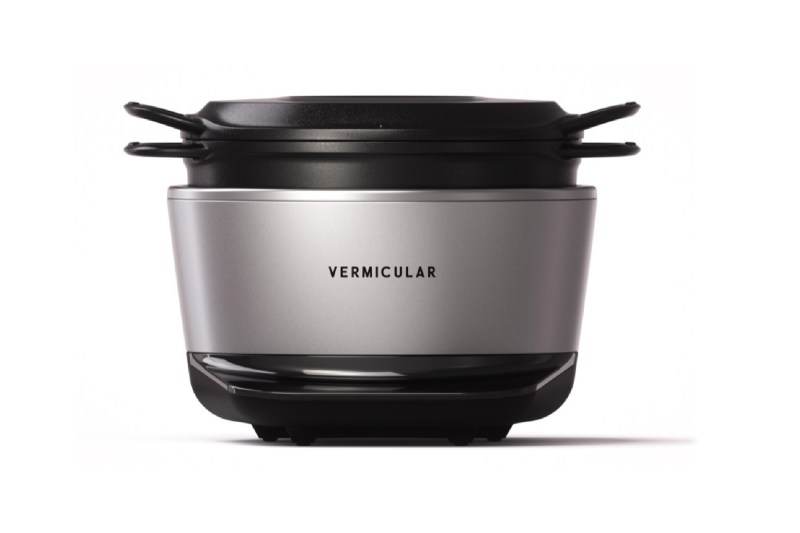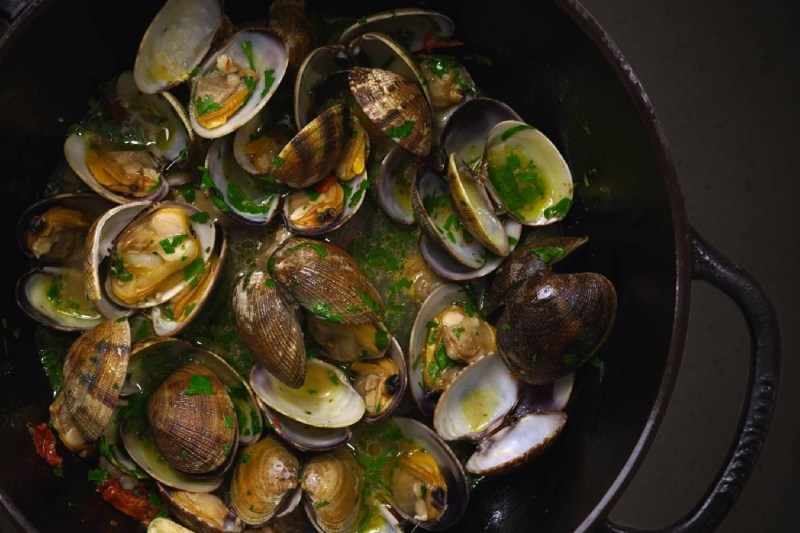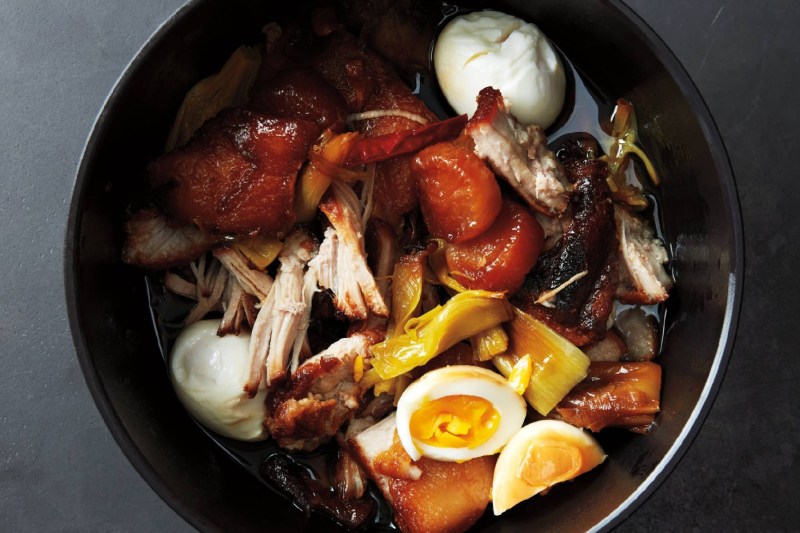Many multi-functional cooking appliances on the market are designed to take some time out of food prep and make our lives a little easier, like pressure cookers, air fryers, and slow cookers. However, there are some categories where these nifty kitchen gadgets often fall short. If you happen to be a fan of design, the highest quality materials, and precision craftsmanship, these features often are unimpressive in many kitchen gadgets.
- What Is the Vermicular Musui-Kamado?
- How Does the Vermicular Musui-Kamado Work?
- What Are the Features of the Vermicular Musui-Kamado?
- What I Like About the Vermicular Musui-Kamado
- What I Don’t Like About the Vermicular Musui-Kamado
- Should You Buy the Vermicular Musui-Kamado?
- Japanese Pork Belly Recipe
- Moroccan Sea Bass with Chermoula Recipe
Vermicular is working hard to fill this gap with its Musui-Kamado. If you’re unfamiliar with the brand, Vermicular is a Japanese cast iron cookware brand that combines technology with precision craftsmanship and artful designs. Recently, the brand has released the most lightweight cast iron pans you can find anywhere. But, its flagship product is the Musui-Kamado.

What Is the Vermicular Musui-Kamado?
In its basic form, the Musui-Kamado is a cast-iron Dutch oven (Musui) with its own induction cooking base (Kamado). The Kamado is designed to simulate the engulfing flames of a traditional Japanese wood-burning stove. The enameled cast iron pot has a hand-machined lid with a precision seal that fits less than a 0.01 variance.
How Does the Vermicular Musui-Kamado Work?
The lid’s super-tight seal can float to release steam when pressure builds. The spiked design of the lid’s interior also collects moisture within the pot and drips it back down, allowing the food to self-baste. That, in conjunction with the induction heating of the Kamado, distributes heat evenly throughout the pot, extracting the foods’ natural juices, eliminating the need for excess water, stock, or seasonings.

What Are the Features of the Vermicular Musui-Kamado?
The Musui-Kamado is designed for seven specific cooking styles: Musui (waterless) cooking, steam-roasting, precision cooking, searing/sauteing, braising/stewing, baking, and rice cooking. However, performing these cooking functions is not as easy as pushing a button, as with some other multi-functional cookers.
The Kamado has four levels of cooking temps. First is the default temperature of Warm, which is set at 175 degrees. You can adjust the temperature between 90-200 degrees Fahrenheit on the Warm setting, and the Kamado will maintain that temperature. The following three settings, Ext Low (230 degrees), Low (300 degrees), and Medium (445 degrees), cannot be adjusted and stick to those temps.
Needless to say, there’s a bit of a learning curve with this device. I highly suggest breaking it in with the recipes in the provided Vermicular cookbook (all of which I’ve tried so far and are delicious) and following them closely. Afterward, if you want to freestyle with your own creations, I suggest following the cooking technique guidelines found on the company website.
What I Like About the Vermicular Musui-Kamado
I’m a sucker for beautiful design in any cookware. If there is some unique tech involved, even more so. As with its cast-iron pans, the beautiful design was the first thing that struck me and is my favorite aspect — to be honest. The Musui doubles as a cooking vessel and an attractive centerpiece on your table. Combined with its magnetic trivet, you can immediately go from cooking to table service.
But don’t get me wrong, the device performs as well. Following the instructions in the Vermicular cookbook to a T, I cooked the best pot of rice in my life. Hands down, it blows away any rice cooker I’ve used in the past.
Being a retired chef, my partner told me that she had the best meal I had ever cooked out of the Musui-Kamado. While I had conflicting feelings about that compliment, it’s a testament to how much work Vermicular puts into the device itself and its recipe development.
There is a very notable difference in the richness of taste and texture of the food cooked within the Musui-Kamado, without relying on heavy seasonings. Not only are you getting a level of flavor you don’t typically experience with other cookware, but you’re also getting an overall healthier dish.
What I Don’t Like About the Vermicular Musui-Kamado
While the Musui-Kamado is indeed a beautiful and luxurious device, it has a few things working against it. First is the cost. At $670, it’s a hefty investment. Although most meticulously designed, hand-crafted products come with premiums such as this, most people might expect that they should essentially be able to cook a hands-free meal at that price.
This brings me to the second issue of the Musui-Kamado, which is the learning curve. I had difficulty going outside of the Vermicular cookbook, even with many years of cooking experience. It could be challenging for the average person to know which setting to cook on and for how long without at least some guidance from the cookbook or website.
Lastly, there is one final minor gripe I have about the Musui-Kamado. It’s its inability to cook large batches of food. While you can cook comfortably for a party of four, you definitely can’t braise an 8-quart batch of carnitas as you can with some slow cookers. While I’m sure the size of the device is necessary due to the tech involved, it would be nice to have the ability to cook more, considering the cost of the machine.
Should You Buy the Vermicular Musui-Kamado?
If you’re like me and appreciate the finer culinary gadgets, and can afford to throw down $670, you shouldn’t let the learning curve of the Musui-Kamado, or its size detour you. Over time, cooking with the device becomes easier through some hand-holding provided within the Vermicular cookbook. Since its components are so well-crafted, this machine can provide a lot of use throughout your lifetime with the proper care. Considering this, even if you only perfected four dishes that you loved and used it once a week, that’s still a worthwhile investment in my book.
Below are two excellent recipes you can find in the Vermicular cookbook. There are also many more recently added
Japanese Pork Belly Recipe

(Courtesy of Vermicular)
This is the recipe I mentioned above that blew my partner away (and myself). The mash of extremely rich sweet, savory, and spicy flavors (I used a few extra chilies) is out of this world. This dish combines the Musui-Kamado’s sear/saute function with braising/stewing.
Ingredients
- 1 ¾ pound pork belly, cut into 2-inch cubes
- 5-inch daikon (500 g), peeled, halved lengthwise, and cut into 1-inch rounds
- 2 leeks, white and pale-green parts only, cut into 2-inch pieces
- 2-inch piece fresh ginger, unpeeled, thinly sliced
- 2 whole dried red chilies
Sauce Mixture
- 6 tablespoons sake
- 6 tablespoons mirin
- 4 tablespoons soy sauce
- 4 tablespoons sugar
- 4 soft-boiled eggs
Method
- Combine ingredients for Sauce Mixture and set aside.
- Preheat the pot with [Med] heat. Once [Grill OK] sign appears, sear pork belly fat-side first. Sear pork for about 1 minute each side or until golden brown on all sides. Transfer the meat onto a paper towel and wipe off excess oil left in the pot before returning the meat.
- Add daikon, leek, ginger, and red chilies on top. Pour in sauce mixture, cover and braise over [ow heat for 120 minutes.
- Turn off heat and rest covered for 10 minutes. Once cooled down, add in soft-boiled eggs, stir and serve.
Note
- If you prefer to remove excess fat, refrigerate overnight so it makes it easier to trim away the solidified fat.
- If using thin daikon, no need to halve lengthwise.
Moroccan Sea Bass with Chermoula Recipe

(Courtesy of Vermicular)
This dish falls under the Musui (waterless) cooking category. Arranging moisture-rich veggies, drizzled in a flavorful Chermola oil cooks the fish perfectly. Be sure to drizzle the fish with the juices at the bottom of the pot.
Ingredients
- 1 pound sea bass fillets (or other white fish), cut into 4 fillets
- 10 cherry tomatoes, halved lengthwise
- 2 small potatoes, thinly sliced
- ½ medium onion, sliced
- ½ medium carrot, thinly sliced
- 1 stalk celery, sliced
- 4 lemon slices
Chermoula Oil
- 4 tablespoons olive oil
- 1 clove garlic, minced
- 1 tablespoon parsley, chopped
- 1 tablespoon cilantro, chopped
- 1 teaspoon kosher salt
- 1 teaspoon ground paprika
- ½ teaspoon ground cumin
- ½ teaspoon ground coriander
- ¼ teaspoon cayenne pepper
- ¼ teaspoon ground ginger
- Zest from 1 lemon, grated
Method
- Mix ingredients for Chermoula Oil.
- Marinate fish using 1 tablespoon of Chermoula Oil for at least 30 minutes, preferably an hour.
- Arrange sliced onions, potatoes, carrots, and celery in the pot in that order and drizzle the rest of Chermoula Oil on top. Place marinated fish and cherry tomatoes on top. Place lemon slices on top of each fish.
- Cover and steam over [Low] heat for 30 minutes and rest covered for 5 minutes.
- Garnish with cilantro or parsley.
Editors' Recommendations
- The 10 best sweet treats for your Valentine’s Day celebration
- Make these 5 easy appetizer dips for your Super Bowl party
- These creative, indulgent Valentine’s Day breakfast recipes are tasty treats
- A chef’s guide to making the perfect Korean fried chicken
- Everything you ever wanted to know about the BRAT Diet




